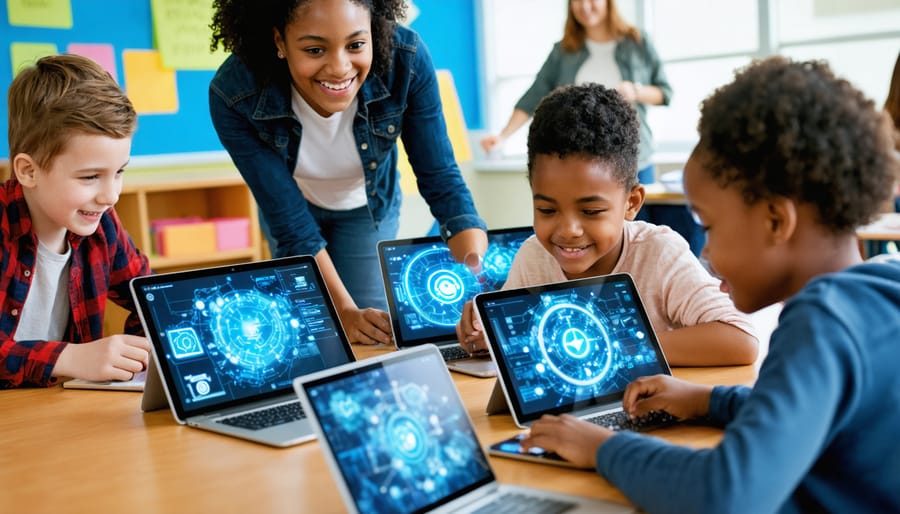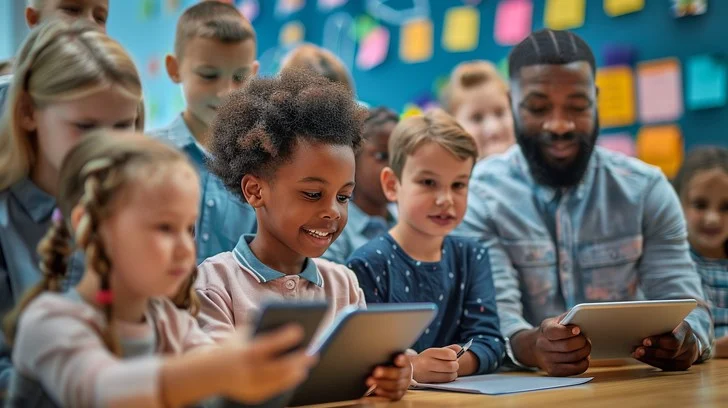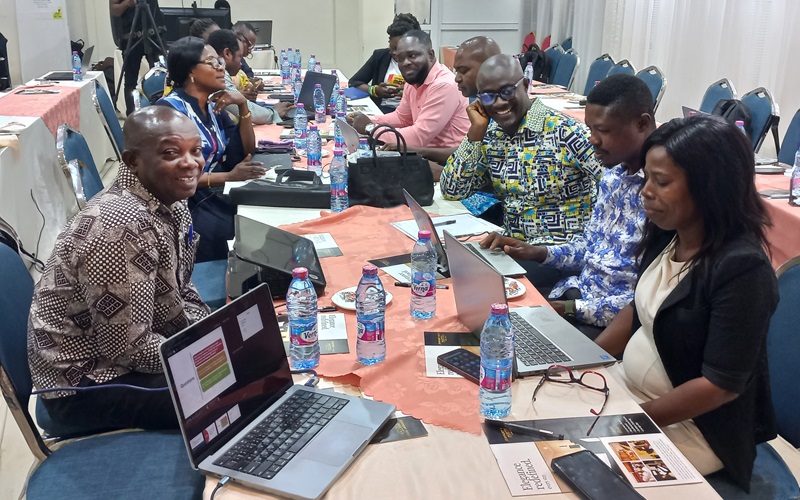
Technology in modern day special education teaching has completely changed how kids with disabilities engage with their surroundings and learn.
By providing adaptable tools and cutting-edge teaching strategies, technological advances helps close the gap between kids with special needs and standard schooling. It encourages participation, accessibility, and individualised training based on each student’s needs.

Because it offers resources that are tailored to each student’s specific requirements, assistive technology is essential in special education. Among the examples are:
By encouraging self-assurance and independence, assistive technology enables students to engage in classroom activities according to research by National Center for Learning Disabilities.
Artificial intelligence (AI) customises lessons according to the requirements of the pupils. Students with impairments can study more effectively thanks to AI-driven systems that analyse learning patterns and provide individual lesson plans.
Software for Adaptive Learning: DreamBox and Lexia are examples of programs that modify their levels of difficulty in response to student performance.
AI chatbots: Provide students who require extra help with immediate guidance and feedback.
Predictive analysis finds gaps in knowledge and offers customised solutions.
According to a report from EdTech Magazine AI-driven education enhances engagement and retention among special education students.
Augmented Reality (AR) and Virtual Reality (VR) create immersive learning environments that make education more engaging for students with special needs.
These technologies support cognitive development and make complex subjects easier to grasp, fostering a more inclusive learning environment.

By integrating elements of game design into the classroom, recreation helps children with special needs find learning more engaging.
Educational Apps: Students who have trouble talking can benefit from Proloquo2Go and other tools.
Whiteboards with interactive features: Encourage collaboration and involvement in class setting.
Platforms for game-based learning: Websites such as Quizlet and Kahoot! adjust to various learning preferences.
According to StudyCreek it is believed that gamification in the classroom improves cognitive skills and increases motivation, particularly for kids with learning difficulties.
Because they provide portable, adaptable learning options, smartphones and tablets have revolutionised special education. Among the noteworthy advantages are:
According to research by EdSurge mobile technology enhances independence and self-paced learning among learners who are abled differently.
Technology integration in special education has downsides despite its advantages:
Cost and Accessibility: High-tech solutions are not always affordable for schools.
Teacher Training: To properly employ assistive technology, educators need to receive training.

Privacy Issues: When utilising technological devices, students’ privacy and data security must be safeguarded.
Government investment in professional development initiatives, and partnerships between IT developers and educators are all necessary to address these issues.
Technology will play a bigger part in special education as it develops further, providing even more creative solutions.
Tutors Inspired by AI: Virtual tutors will offer individualised assistance.
wearable technology such as smart specs will help kids with autism engage with others.
Education and Blockchain: Simple tracking of student progress and increased accessibility are two benefits of secure record-keeping.
Students who have limitations may now study, communicate, and succeed because to the revolutionary role that technology plays in special education. The future of inclusive education is full with fascinating possibilities as long as developments continue.

To guarantee that everyone has fair access to these revolutionary resources, educators, legislators, and schools must collaborate. See our resources on instructional technologies for further information on StudyCreek.
Delivering a high-quality product at a reasonable price is not enough anymore.
That’s why we have developed 5 beneficial guarantees that will make your experience with our service enjoyable, easy, and safe.
You have to be 100% sure of the quality of your product to give a money-back guarantee. This describes us perfectly. Make sure that this guarantee is totally transparent.
Read moreEach paper is composed from scratch, according to your instructions. It is then checked by our plagiarism-detection software. There is no gap where plagiarism could squeeze in.
Read moreThanks to our free revisions, there is no way for you to be unsatisfied. We will work on your paper until you are completely happy with the result.
Read moreYour email is safe, as we store it according to international data protection rules. Your bank details are secure, as we use only reliable payment systems.
Read moreBy sending us your money, you buy the service we provide. Check out our terms and conditions if you prefer business talks to be laid out in official language.
Read more